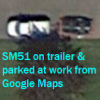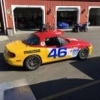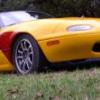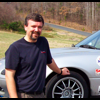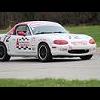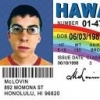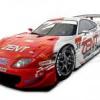
Best Air Cone Filter Assemply and Best Radiator
#1

 Posted 05-31-2012 09:50 PM
Posted 05-31-2012 09:50 PM

What is the "best" air cone filter assembly for a 1990 1.6 Spec Miata per SCCA rules?
I would appreciate if someone could point me in the right direction on that one.
#2

 Posted 05-31-2012 10:35 PM
Posted 05-31-2012 10:35 PM



#3

 Posted 06-01-2012 03:04 AM
Posted 06-01-2012 03:04 AM

http://www.saferacer...l?productid=540,
though lot's lie the Koyo too
http://www.advanced-...&products_id=26
and here
http://www.advanced-...products_id=235
For the rad I got one of these, cheap, on eBay....
http://www.ebay.com/...#ht_6002wt_1258
#4

 Posted 06-01-2012 06:34 AM
Posted 06-01-2012 06:34 AM

My ground up build (first build ever) will cost as much as my Formula 1000 car. Spec Miata is only entry level if you buy one of those $6000 cars and drive without any "love" for it.
#5

 Posted 06-01-2012 07:11 AM
Posted 06-01-2012 07:11 AM

I've got a koyo radiator and the "straight shot" SP intake. Lots of guys have had good luck with the lower priced CX radiator.
Good luck with the build. Lots of great resources to draw upon in the NE.
-Vick
Vick
www.volko.com
Black SM/SM2/"Slap Bracelet Throwback" #12 in the Northeast....if the car was made in the early 90's it should look like it.
1.6L forever! Bring on your '99's and '01's!



#6

 Posted 06-01-2012 09:40 AM
Posted 06-01-2012 09:40 AM

Spec Miata is only entry level if you buy one of those $6000 cars and drive without any "love" for it.
That's not completely fair. There's good cars out there for around $10K that deserve to be "loved". I think that qualifies as "entry level", thought it's no $5K ITB car.
- dstevens likes this
--because someone commented that we should all post our names, and not be anonymous. I agree.


#7

 Posted 06-01-2012 09:53 AM
Posted 06-01-2012 09:53 AM

-tch
Build: www.tomhampton.info
video: vimeo.com/tomhampton
Support: X-Factor Racing
I didn't lose, I just got outspent!



#8

 Posted 06-01-2012 04:56 PM
Posted 06-01-2012 04:56 PM

1. Is the Spinduction CURVED air filter better than the carbon fiber 4.5 unit? Did Dave ever tested that one?
2. How to find out if my AFM was modified or not?
#9

 Posted 06-01-2012 05:16 PM
Posted 06-01-2012 05:16 PM


#10

 Posted 06-01-2012 07:16 PM
Posted 06-01-2012 07:16 PM

In my dyno testing I have found the curved spinduction to make more power and torque than anything else. I have NOT tried the carbon one.
Get an unmodified AFM. If the glue around the black cover is still sealed, I would bet the AFM is unmodified
Of course I think my regulator kit is the best. But in honesty, the all work the same.
Then dyno away.
I have been using the big Koyo rad for years with no issues, even in 97 degree high humidity days like last weekend
Dave
Dave Wheeler
Advanced Autosports, the nations most complete Spec Miata shop
Author, Spec Miata Constructors Guide, version 1 and 2.0
Building Championship winning cars since 1995
4 time Central Division Spec Miata Champion car builder 2012-2013-2014-2017
Back to Back June Sprints Spec Miata 1-2 finishes 2016 and 2017
5 time June Sprints winner in Mazda's
6 Time Northern Conference Champion Car Builder
2014 SCCA Majors National point Champion car builder
2014 SCCA Runoffs winner, T4 (Bender)
2014 Central Division Champion, ITS (Wheeler)
2013 Thunderhill 25 hour winning crew chief
2007 June Sprints winner, (GT1, Mohrhauser)
Over 200 race wins and counting.
www.advanced-autosports.com
dave@advanced-autosports.com
608-313-1230





#11

 Posted 06-07-2012 11:14 PM
Posted 06-07-2012 11:14 PM

On the air filter. After some looking around I have a feeling the best air filter for a Spec Miata is yet to be build, and I'm going to build it for myself. If I can not build it I will buy the SPX2 filter as that's the one that creates more power on the dyno. From what I can gather, the reason this filter is superior has to do with the position of the filter cone. Away from the engine bay catches cooler air, which is step in the right direction, but it's not optimal. Will try to make it optimal.
#12

 Posted 06-08-2012 06:17 AM
Posted 06-08-2012 06:17 AM

To bad the "Waffle Maker" never made it into production. I think they could have sold a bunch of 'em.


#13

 Posted 06-08-2012 06:46 AM
Posted 06-08-2012 06:46 AM

It has more to do with airflow inside the housing than filter location. To prove it, dyno with the hood open, no heat soaked air if the hood is open.
Maybe you are an airflow expert, who knows more than spinduction (who actually do know something about airflow in their everyday world). And you have the time and money to build your creation, dyno test it and hope it actually works.
OR
Just purchase a proven part and do it the easy way.
Dave
- dstevens likes this
Dave Wheeler
Advanced Autosports, the nations most complete Spec Miata shop
Author, Spec Miata Constructors Guide, version 1 and 2.0
Building Championship winning cars since 1995
4 time Central Division Spec Miata Champion car builder 2012-2013-2014-2017
Back to Back June Sprints Spec Miata 1-2 finishes 2016 and 2017
5 time June Sprints winner in Mazda's
6 Time Northern Conference Champion Car Builder
2014 SCCA Majors National point Champion car builder
2014 SCCA Runoffs winner, T4 (Bender)
2014 Central Division Champion, ITS (Wheeler)
2013 Thunderhill 25 hour winning crew chief
2007 June Sprints winner, (GT1, Mohrhauser)
Over 200 race wins and counting.
www.advanced-autosports.com
dave@advanced-autosports.com
608-313-1230





#14

 Posted 06-08-2012 07:20 AM
Posted 06-08-2012 07:20 AM

#15

 Posted 06-08-2012 09:53 AM
Posted 06-08-2012 09:53 AM

I have a Koyo. The SD is a big mofo - a little bigger than the Koyo. The Koyo dropped in. The SD didn't come close to a drop-in install and took a couple or so hours of fiddling around modifying the radiator to fit.
There are a couple of things you need to be careful about when installing a SD rad:
1. We had to drill new holes for the lower mounting points. The lower mounting holes were not drilled at the correct location and screwed up the alignment of the top mounting holes. Re-use the stock pins in this location. Iirc, there is some padding on those spring loaded pins which helps eliminate vibrations. Took us a few minutes to find the tiny little c-clips to remove the stock pins from the side brackets attached to the stock radiator. They are spring loaded so you can squeeze them to remove and reinstall.
The Koyo re-uses the entire stock side brackets so you don't have to screw around with removing the pins from the bracket for the Koyo
2. Make sure that the lower mounting brackets attached the frame rails (over the sway bar brackets) do not touch the side of the radiator. We had to unbolt those and bend them out of the way a little bit. I think this is b/c the SD is a little wider than the Koyo.
You may have to do this with the Koyo and any other rad as well.
3. Once you got #1 and 2 sorted out, Look down the the front face of the radiator a few inches down from the top mounting holes. Make sure that the radiator is not touching the sheet metal. We needed to "persuade" the sheet metal by introducing it to a BFH to move it away from where the radiator wants to sit. In some spots it was touching. In others the air gap was so small that the chances of the rad and sheet metal touching from vibrations when on track was possible. Metal to metal contact - whether direct or from occasional vibration while the car is on track will lead to the soft aluminum of the rad eventually failing.
4. The rubber isolators at the top mounting points were a pita to install into the provided holes in the SD rad. We had to do something with those holes to fit the rubber isolators. I can't remember exactly what the issue was though... Getting old... You want to make sure you use the stock rubber isolators to eliminate metal to metal contact and the leaks that would result from that. The top of the rad sits pretty close to the cross member so be careful that they are not touching when installing and use washers along with the rubber isolators to make sure there is no contact at that point either.
5. After all that, Austin then had to find a hose that fit the top. The stock hose no longer works - too short. The bottom hoses were re-useable.
You will want to perform these checks when installing any radiator really. I think the only thing I had to worry about with the Koyo was those side brackets in #2. Other than that, it dropped right it beautifully. Installing the SD took us 2 hours or so of mounting it, finding the issue or interference points, removing it, fixing the issue, re-mount, find next issue, rinse and repeat.
If you are paying a mechanic to install the SD, expect a bigger bill
- dstevens likes this

#16

 Posted 06-08-2012 11:22 AM
Posted 06-08-2012 11:22 AM

I helped Austin install a Springfield Dyno rad in his '91 (Nor-Cal 91 build thread). The bumper was off when we installed it so we had plenty of visibility under the car and under the cross member onto which the rad and bumper mount.
I have a Koyo. The SD is a big mofo - a little bigger than the Koyo. The Koyo dropped in. The SD didn't come close to a drop-in install and took a couple or so hours of fiddling around modifying the radiator to fit.
There are a couple of things you need to be careful about when installing a SD rad:
1. We had to drill new holes for the lower mounting points. The lower mounting holes were not drilled at the correct location and screwed up the alignment of the top mounting holes. Re-use the stock pins in this location. Iirc, there is some padding on those spring loaded pins which helps eliminate vibrations. Took us a few minutes to find the tiny little c-clips to remove the stock pins from the side brackets attached to the stock radiator. They are spring loaded so you can squeeze them to remove and reinstall.
The Koyo re-uses the entire stock side brackets so you don't have to screw around with removing the pins from the bracket for the Koyo
2. Make sure that the lower mounting brackets attached the frame rails (over the sway bar brackets) do not touch the side of the radiator. We had to unbolt those and bend them out of the way a little bit. I think this is b/c the SD is a little wider than the Koyo.
You may have to do this with the Koyo and any other rad as well.
3. Once you got #1 and 2 sorted out, Look down the the front face of the radiator a few inches down from the top mounting holes. Make sure that the radiator is not touching the sheet metal. We needed to "persuade" the sheet metal by introducing it to a BFH to move it away from where the radiator wants to sit. In some spots it was touching. In others the air gap was so small that the chances of the rad and sheet metal touching from vibrations when on track was possible. Metal to metal contact - whether direct or from occasional vibration while the car is on track will lead to the soft aluminum of the rad eventually failing.
4. The rubber isolators at the top mounting points were a pita to install into the provided holes in the SD rad. We had to do something with those holes to fit the rubber isolators. I can't remember exactly what the issue was though... Getting old... You want to make sure you use the stock rubber isolators to eliminate metal to metal contact and the leaks that would result from that. The top of the rad sits pretty close to the cross member so be careful that they are not touching when installing and use washers along with the rubber isolators to make sure there is no contact at that point either.
5. After all that, Austin then had to find a hose that fit the top. The stock hose no longer works - too short. The bottom hoses were re-useable.
You will want to perform these checks when installing any radiator really. I think the only thing I had to worry about with the Koyo was those side brackets in #2. Other than that, it dropped right it beautifully. Installing the SD took us 2 hours or so of mounting it, finding the issue or interference points, removing it, fixing the issue, re-mount, find next issue, rinse and repeat.
If you are paying a mechanic to install the SD, expect a bigger bill
SD definetely not a drop-in piece.
Also support from SD on the install is non-existing.
It best last a long, long time...

#17

 Posted 06-09-2012 12:54 PM
Posted 06-09-2012 12:54 PM

- common sense tells me that is true, but common sense also tells me there is more parts to this equation than just airflow inside the housing, and filter location.It has more to do with airflow inside the housing than filter location.
Btw, the Gates hose fits both 1.6 and 1.8 cars and not like the instructions say 1.8 cars.
#18

 Posted 06-09-2012 02:18 PM
Posted 06-09-2012 02:18 PM

@Alberto and ARMRAM. What year was your SD radiator? My radiator was purchased a week ago and it was a 99% drop in minus the upper radiator hose. For that you need a hose by Gates (part number: 22133). No other modification was required. Total drop in.
It was a few months ago. Check Austin's thread:
http://mazdaracers.c...d/page__st__100

#19

 Posted 06-10-2012 09:55 AM
Posted 06-10-2012 09:55 AM

Well, I guess I'll have to buy some dyno time (someday) to see what works best on my car. Had the curved SP intake - several experts told me to get the straight one, which is now on the car. So I've got one of each.
To bad the "Waffle Maker" never made it into production. I think they could have sold a bunch of 'em.
Well, a Wafflemaker still makes its way out of the shop every once in a while ... and I'm workong toward trying to have ten on hand ready to go with matched and tuned AFMs.
The translation of the dyno session to the track is often overlooked - it is very common that changing the intake will change the AFM tune in a "lucky" (or unlucky) way ... the intake air temps can be unrealistically hot or cold ... hood closed on the dyno isn't realistic, but neither is hood up on a cool night .... and so on ....
For faster reply than PM: miataboxes>>>AT<<<gmail>>DOT<<<com
#20

 Posted 06-10-2012 11:29 AM
Posted 06-10-2012 11:29 AM

Well, a Wafflemaker still makes its way out of the shop every once in a while ... and I'm workong toward trying to have ten on hand ready to go with matched and tuned AFMs.
Are you also making your own golf balls.
Seriously, is your Wafflemaker with matched and tuned AFM better than a FPR & non tuned AFM?
If so how about a hp/tq graph both ways. Sales graphs.



0 user(s) are reading this topic
0 members, 0 guests, 0 anonymous users




 Sign In
Sign In Create Account
Create Account



 Back to top
Back to top Report
Report
